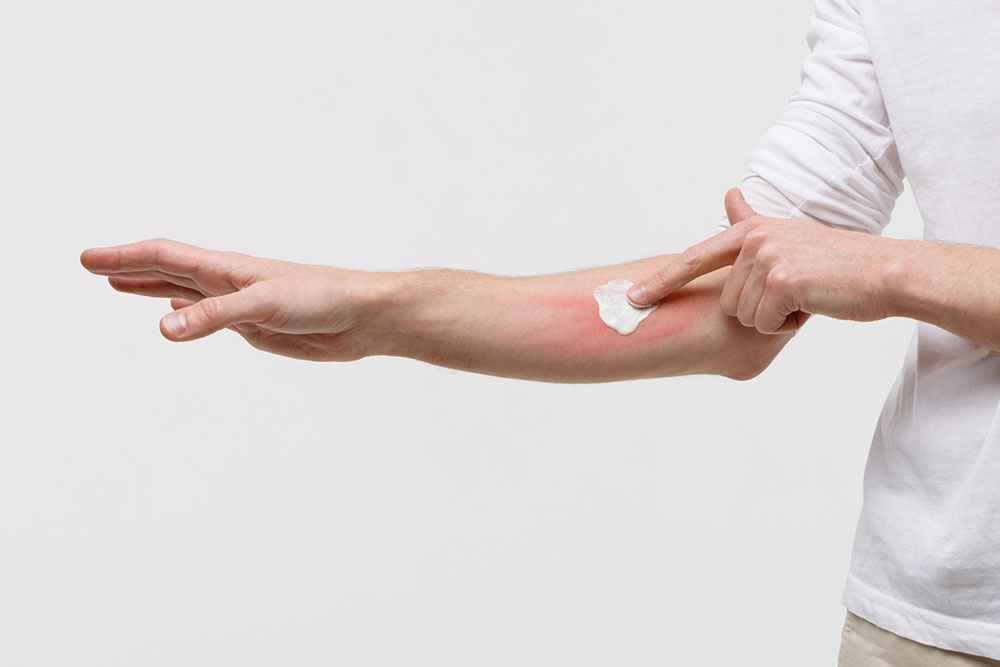Effective Natural Strategies for Managing Atopic Dermatitis: A Comprehensive Guide
Discover comprehensive natural remedies to ease atopic dermatitis symptoms, including soothing lotions, dietary tips, and skin protection strategies. Learn how to effectively manage flare-ups and improve skin health through natural methods combined with medical guidance for long-term relief.

Natural Approaches to Calm and Treat Atopic Dermatitis
Atopic dermatitis, commonly known as eczema, is a prevalent chronic skin condition characterized by inflammation, dryness, and intense itching. While it predominantly affects infants and young children, adults can also suffer from this uncomfortable condition. The affected skin often presents with redness, rash, crusting, and soreness, significantly impacting quality of life. Understanding the underlying causes and exploring natural remedies can empower individuals to better manage symptoms, reduce flare-ups, and foster healthier skin. This detailed guide delves into effective natural strategies for alleviating atopic dermatitis and maintaining skin wellness.
While consulting healthcare professionals remains essential, incorporating natural remedies into your skin care routine can complement medical treatments. Essential practices include soothing topical applications, lifestyle adjustments, dietary modifications, and environmental protections. These strategies not only help reduce itching and inflammation but also strengthen skin barrier function. Let’s explore each of these natural methods in detail to provide you with practical tools for managing atopic dermatitis effectively.
1. Calamine Lotion for Immediate Relief
One of the most effective natural remedies for soothing irritated skin caused by atopic dermatitis is applying calamine lotion. This classic topical treatment helps alleviate itching, reduce inflammation, and calm irritated skin. Its cooling sensation provides instant relief from discomfort, making it a staple in managing flare-ups. To maximize benefits, ensure the affected areas are clean before application, and avoid overuse to prevent potential dryness. Using calamine lotion regularly during flare-ups can significantly diminish the urge to scratch, thereby reducing skin damage and promoting healing.
2. Maintain Nail Hygiene and Prevent Scratching
Scratching is perhaps the most damaging aspect of atopic dermatitis. Not only does it worsen inflammation and cause skin tears, but it also introduces bacteria that can lead to secondary infections. To prevent this, keeping nails short and smooth is essential. Wearing gloves at night or during times of intense itching can also help prevent accidental scratching. Educating oneself about the importance of avoiding the temptation to scratch, along with behavioral techniques like distraction or mindfulness, can contribute greatly to effective symptom control. Proper nail hygiene is a simple but vital step in preventing skin damage and supporting healing.
3. Warm Baths with Oatmeal or Baking Soda
Bathing is a simple yet powerful natural remedy for managing atopic dermatitis symptoms. Taking warm baths with colloidal oatmeal or baking soda helps soothe inflamed skin, reduce itching, and lock in moisture. Oatmeal contains anti-inflammatory compounds that calm irritated skin, while baking soda neutralizes skin pH and relieves itching. To prepare, add a cup of colloidal oatmeal or a_HALF cup of baking soda to lukewarm bathwater and soak for about 15-20 minutes. Pat dry gently afterward, avoiding vigorous rubbing, and immediately apply a moisturizer to lock in hydration. Regular baths can significantly improve skin comfort and barrier function over time.
4. Wash New Clothes Thoroughly
Imported or newly purchased clothes can contain irritants such as dyes, fragrances, or chemical residues that exacerbate atopic dermatitis symptoms. To minimize exposure, always wash new clothing thoroughly with gentle, fragrance-free detergents before wearing. Avoid fabric softeners and harsh cleaning agents that can strip the skin’s natural oils or introduce irritating chemicals. Opt for soft, breathable fabrics like cotton, which are less likely to cause flare-ups. Proper laundry routines help create a skin-friendly environment, reducing the risk of irritation and promoting healthier skin.
5. Use Mild Soothing Oils
Natural oils can play a pivotal role in nurturing dry, sensitive skin affected by atopic dermatitis. Applying mild, fragrance-free oils such as coconut oil, jojoba oil, or shea butter provides deep hydration, maintains skin elasticity, and creates a barrier against environmental irritants. These oils are rich in fatty acids that support skin repair and reduce moisture loss. To maximize benefits, apply oils immediately after bathing when skin is still damp. Regular use can improve skin texture, diminish dryness, and protect against external triggers, thereby contributing to long-term skin health.
6. Adopt an Anti-Inflammatory Diet
Dietary choices significantly influence skin health and inflammation levels. Incorporating anti-inflammatory, nutrient-rich foods can help manage atopic dermatitis from within. Emphasize a diet abundant in omega-3 fatty acids found in fatty fish like salmon, mackerel, and sardines, as well as flaxseeds and walnuts. Include plenty of brightly colored fruits and vegetables rich in antioxidants, such as berries, spinach, and sweet potatoes, which combat oxidative stress. Probiotic-rich foods like yogurt and kefir can support gut health, indirectly reducing skin inflammation. Avoid processed foods, sugar, and artificial additives that can trigger flare-ups. A balanced, anti-inflammatory diet promotes healthier skin and strengthens the immune response.
7. Protect Skin from Sun and Harsh Chemicals
Environmental factors play a crucial role in the exacerbation of atopic dermatitis. Ultraviolet (UV) rays from sun exposure can dry out and damage sensitive skin, while harsh chemicals in skincare products, detergents, and cleaning agents can irritate and weaken the skin barrier. To safeguard your skin, always wear broad-spectrum sunscreens designed for sensitive skin, and limit sun exposure during peak hours. Use gentle, fragrance-free skincare products that do not contain alcohol, dyes, or harsh preservatives. Wearing protective clothing and avoiding exposure to environmental pollutants can also help maintain healthier skin and prevent flare-ups.
Building a Holistic Skin Management Routine
Combining these natural remedies with medical advice creates a comprehensive approach to managing atopic dermatitis. Consistency is key; establishing a daily routine that includes gentle cleansing, moisturizing, sun protection, and healthy lifestyle choices greatly enhances skin resilience. Regular monitoring of skin condition, prompt action during flare-ups, and avoiding known triggers contribute to long-term control. Lifestyle adjustments, such as maintaining good hydration and reducing stress, can also improve overall skin health. Remember, personalized strategies developed in collaboration with healthcare providers often yield the best results in managing this chronic condition.
Conclusion
While atopic dermatitis may pose ongoing challenges, incorporating natural remedies into your daily skincare regimen can significantly ease symptoms and promote healthy skin. From soothing topical applications, careful diet, and environmental protections to good hygiene and behavioral measures, these strategies empower individuals to regain control over their skin health. Always consult with healthcare professionals for personalized treatment plans, especially if symptoms worsen or persist. With patience, consistency, and natural care, managing atopic dermatitis becomes a more achievable goal, leading to healthier, itch-free skin and improved quality of life.





